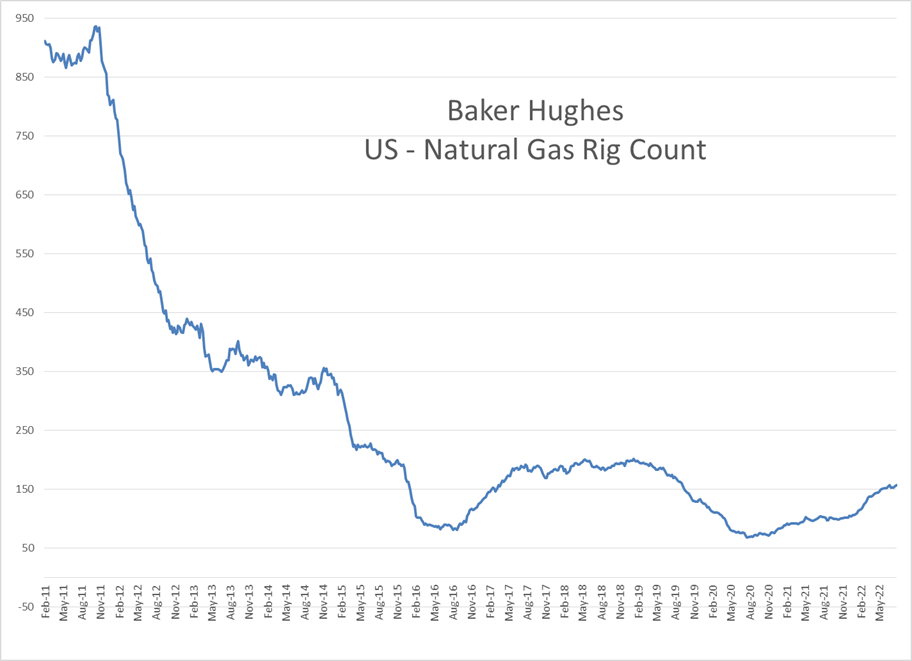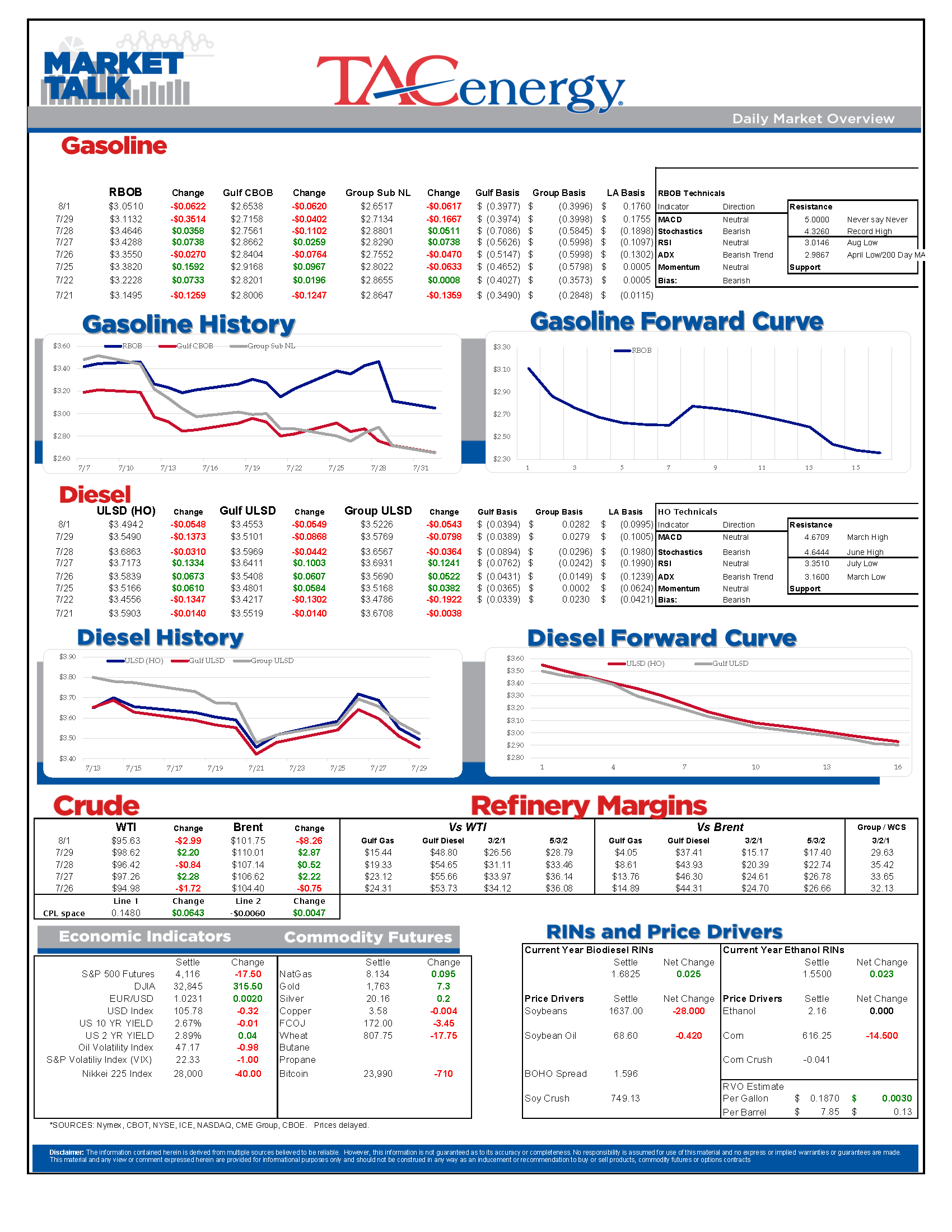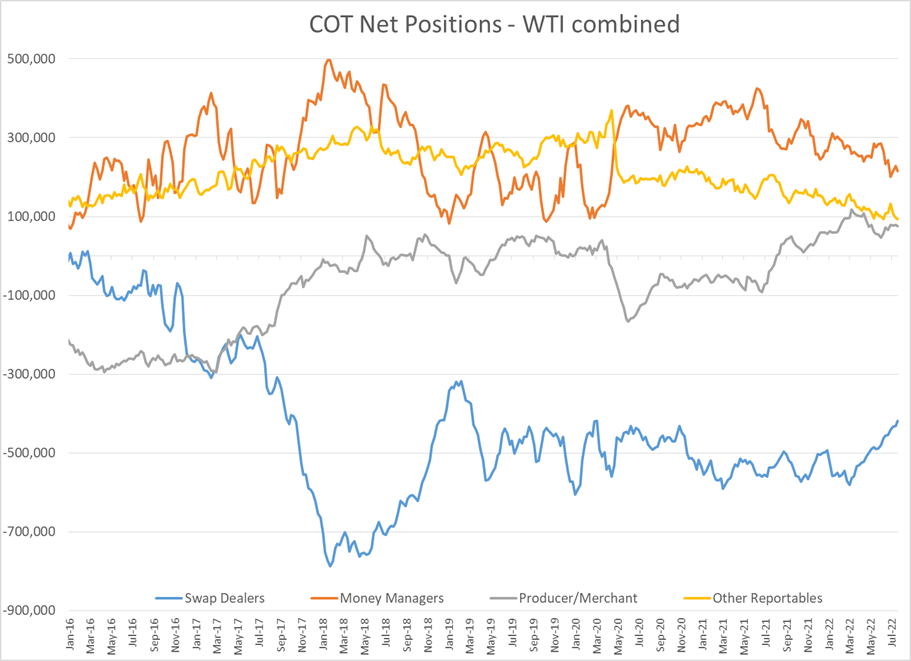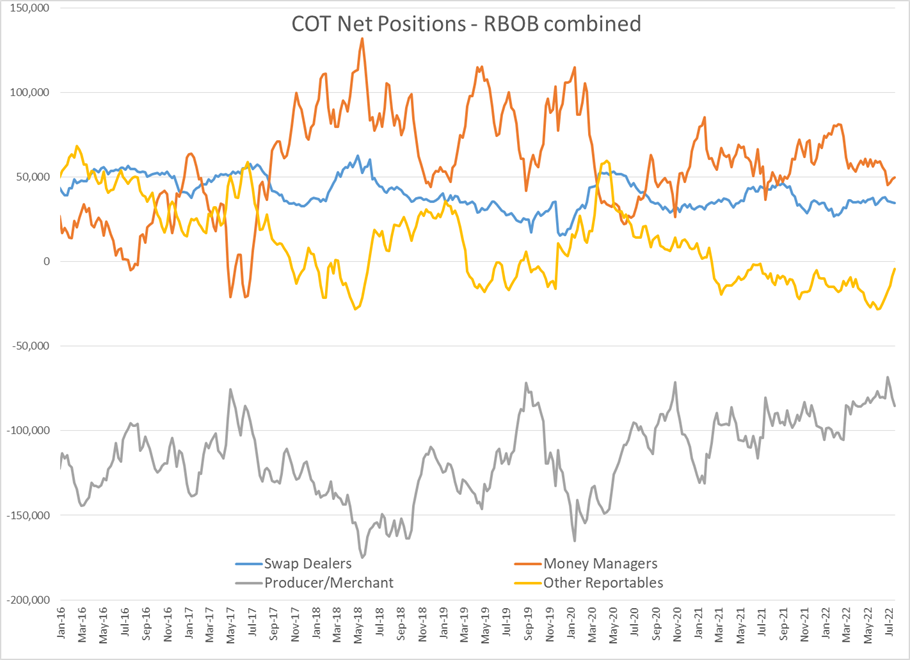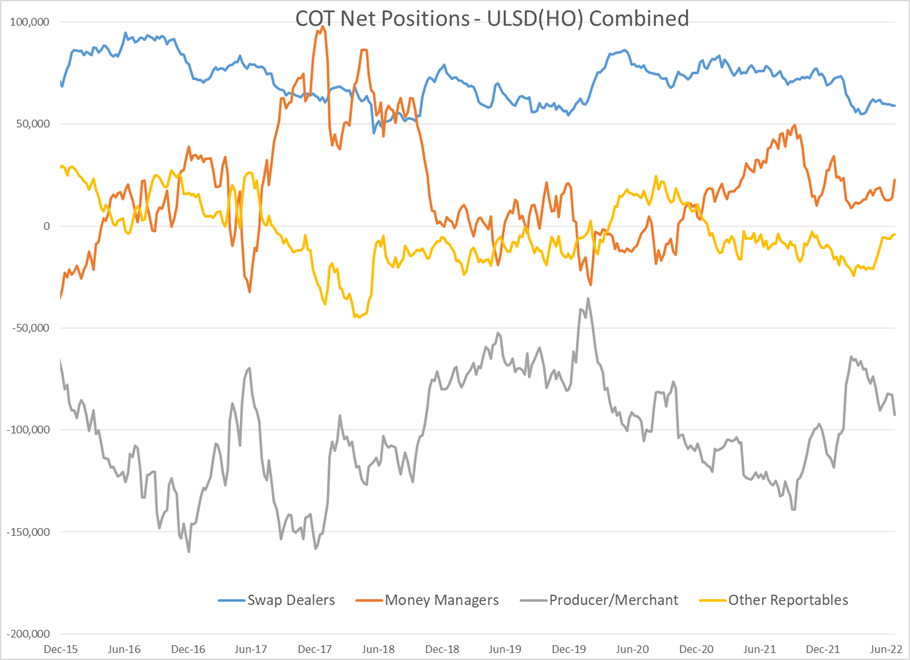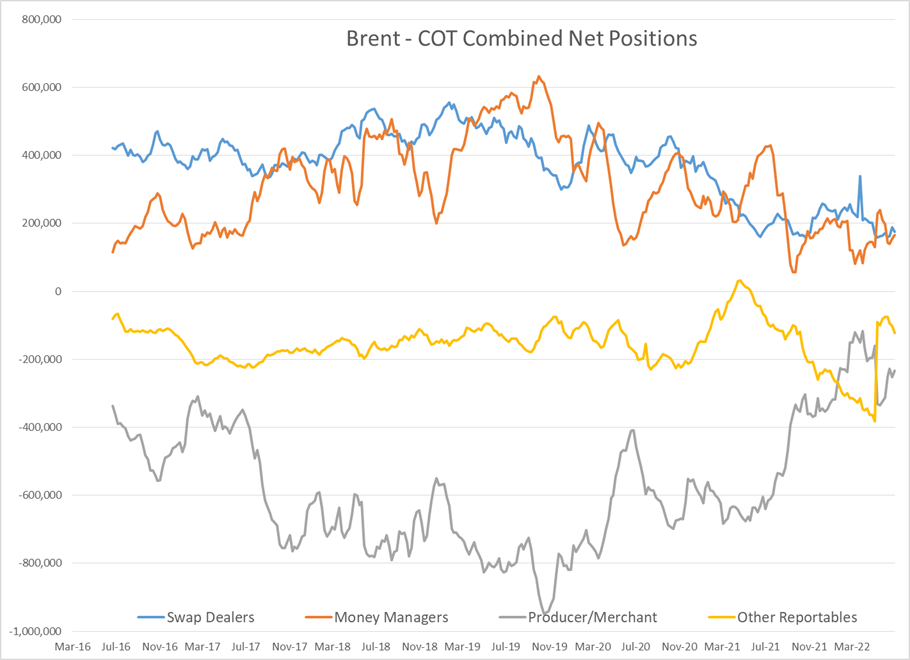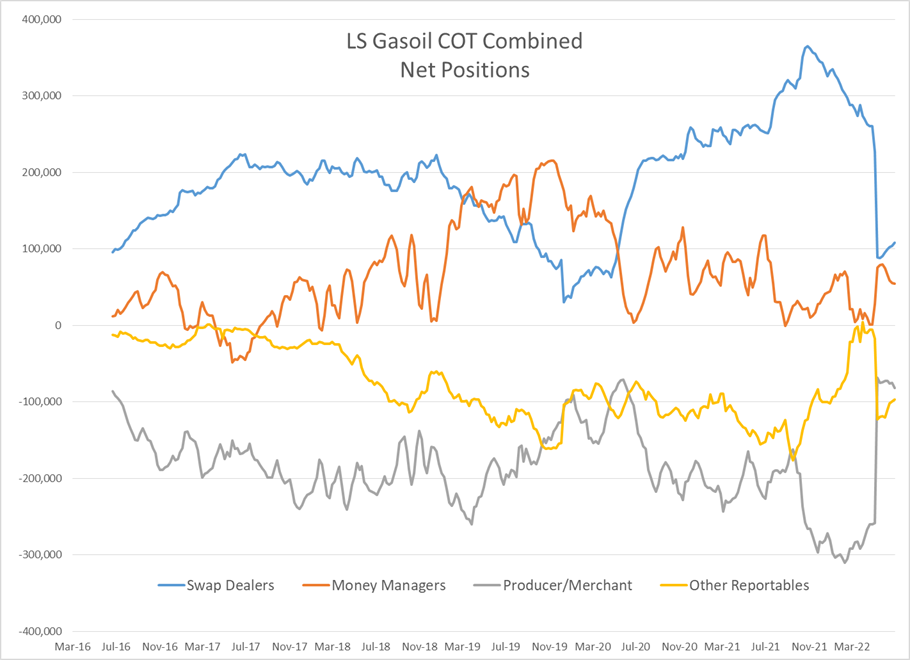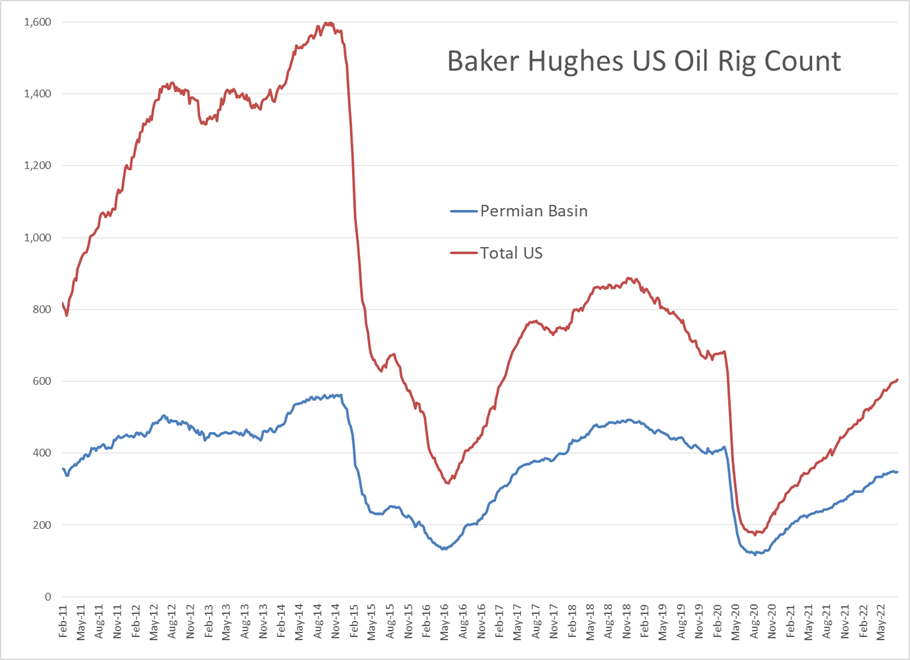It’s Been A Busy And Choppy Start To Trading In August As The Energy Complex Tests The Lower End Of Its Summer Trading Range

It’s been a busy and choppy start to trading in August as the energy complex tests the lower end of its summer trading range, creating some big swings in the early going. RBOB gasoline was down almost a dime around 7am central, but has cut those gains in half in 30 minutes. ULSD prices were down 8 cents at 7, rallied to down 3 as of 7:30, then were down almost 7 again by 7:45.
RBOB faces an immediate technical test to start the month, with the contract roll bringing prices from a high of $3.71 on Friday, to a test of $3 today. The $3 range has 3 layers of chart support, marking the July low of $3.02, the psychologically meaningful $3 mark, and the 200 day moving average at $2.99. IF these layers of support break, it looks like we’ll see another 15 cent drop in short order, with a move into the $2.70s possible. Speaking of which, the September RBOB contract is the last summer-spec contract of the year, and the October contract is already trading in the high $2.70s this morning thanks to the combination of steep backwardation and RVP transition. Cash markets are adding to the bearish feel for gasoline prices, with several regional values already around $2.65 this morning, which will mean retail prices below $3.50 coming soon for many consumers if the trend holds.
WTI is also facing another test at its 200 day moving average, after bouncing off of that level in 6 of the past 8 trading sessions. If US oil prices don’t find a way to rally soon (as in this week) it looks like we’ll be talking about oil in the $80s some-time in August.
While gasoline and oil prices look weak on the charts, ULSD is looking relatively strong, with a more neutral outlook. The roll from the expiring August contract did move prompt prices into the lower half of the summer trading range, but there’s still more than 12 cents to fall before chart support gets tested for diesel.
The CFTC’s commitment of traders report shows that money managers continue to have mixed feelings on energy price bets, with the only consistency seen in recent weeks being a lack of open interest outstanding. The open interest for refined products is holding at its lowest levels since 2015, which was when the US fracking boom helped petroleum prices go bust. Here too ULSD looks the most bullish with new speculative longs entering the market last week, while other funds covered short positions, leading to large increase in net length held by money managers on the week.
Baker Hughes reported a net increase of 6 oil rigs and 2 natural gas rigs last week, ending a 2 week lull in new drilling activity. Texas led the increase with 6 new rigs added last week, 2 each in the Permian and Eagle Ford plays. The total US oil rig count surpassed 600 for the first time since April of 2020 (you might remember this as the month when WTI traded negative) and leaves the possibility that the rig count could reach pre-pandemic levels by year end.
It’s been almost a month since we saw a named storm in the Atlantic, and the NHC suggests this will be another quiet week. Despite the calm waters, forecasters are still calling for an above average hurricane season, and it’s not just the Gulf Coast refining complex that seems extra vulnerable this year: A WSJ article highlights how a shortage of transformers could spell trouble for turning the lights back on after a storm hits.
Click here to download a PDF of today's TACenergy Market Talk.
Latest Posts
Week 16 - US DOE Inventory Recap
Energy Markets Trading Quietly In The Red As Ethanol Prices Rally To Five-Month High
The Struggle For Renewable Producers Continues As A Rapid Influx Of Supply And Crashing Credit Prices Make Biodiesel
After Years Of Backwardation, Diesel Prices Have Slipped Into Contango Over The Past Week
Social Media
News & Views
View All
Week 16 - US DOE Inventory Recap

Energy Markets Trading Quietly In The Red As Ethanol Prices Rally To Five-Month High
Energy markets are trading quietly in the red to start Wednesday’s session after a healthy bounce Tuesday afternoon suggested the Israel-Iran-linked liquidation had finally run its course.
There are reports of more Ukrainian strikes on Russian energy assets overnight, but the sources are sketchy so far, and the market doesn’t seem to be reacting as if this is legitimate news.
Ethanol prices have rallied to a 5-month high this week as corn and other grain prices have rallied after the latest crop progress update highlighted risks to farmers this year, lower grain export expectations from Ukraine, and the approval of E15 blends this summer despite the fact it pollutes more. The rally in grain and renewables prices has also helped RIN values find a bid after it looked like they were about to test their 4-year lows last week.
The API reported small changes in refined product inventories last week, with gasoline stocks down about 600,000, while distillates were up 724,000. Crude oil inventories increased by 3.2 million barrels according to the industry-group estimates. The DOE’s weekly report is due out at its normal time this morning.
Total reported another upset at its Port Arthur refinery that’s been a frequent flier on the TCEQ alerts since the January deep freeze knocked it offline and damaged multiple operating units. This latest upset seems minor as the un-named unit impacted was returned to normal operations in under an hour. Gulf Coast basis markets have shrugged off most reports of refinery upsets this year as the region remains well supplied, and it’s unlikely we’ll see any impact from this news.
California conversely reacted in a big way to reports of an upset at Chevron’s El Segundo refinery outside of LA, with CARBOB basis values jumping by more than a dime. Energy News Today continued to show its value by reporting the upset before the flaring notice was even reported to area regulators, proving once again it’s ahead of the curve on refinery-related events. Another industry news outlet meanwhile struggled just to remember where the country’s largest diesel seller is located.
Click here to download a PDF of today's TACenergy Market Talk

The Struggle For Renewable Producers Continues As A Rapid Influx Of Supply And Crashing Credit Prices Make Biodiesel
The sigh of relief selloff continues in energy markets Tuesday morning, with gasoline prices now down more than 20 cents in 7 sessions, while diesel prices have dropped 26 cents in the past 12. Crude oil prices are within a few pennies of reaching a 1 month low as a lack of headlines from the world’s hot spots allows some reflection into the state of the world’s spare capacity for both oil and refined products.
Gasoline prices are trading near a 6-week low this morning, but still need to fall about another nickel in order to break the weekly trendline that pushed prices steadily higher since December. If that trend breaks, it will be safer to say that we saw the end of the spring gasoline rally on April 12th for the 2nd year in a row. Last year RBOB futures peaked on April 12 at $2.8943 and bottomed out on May 4th at $2.2500. The high (at this point) for this year was set on April 12th at $2.8516, and the low overnight was $2.6454.
It’s not just energy commodities that are seeing an unwind of the “flight to safety” trade: Gold prices had their biggest selloff in 2 years Monday and continue to point lower today. Just how much money poured into commodities in the weeks leading up to the direct confrontation between Israel and Iran is unclear, but we have seen in year’s past that these unwind-events can create a snowball effect as traders can be forced to sell to cover their margin calls.
Supply > Demand: The EIA this morning highlighted the record setting demand for natural gas in the US last year, which was not nearly enough to offset the glut of supply that forced prices to a record low in February. A shortage of natural gas in Europe was a key driver of the chaotic markets that smashed just about every record in 2022, and an excess of natural gas supply in Europe and the US this year is acting as a buffer, particularly on diesel prices.
The struggle for renewable producers continues as a rapid influx of supply and crashing credit prices make Biodiesel, RD and SAF unprofitable for many. In addition to the plant closures announced in the past 6 months, Vertex Energy reported Monday it’s operating its Renewable Diesel facility in Mobile AL at just 50% of capacity in Q1. The truly scary part for many is that the $1/gallon Blender's tax credit ends this year and is being replaced by the “Clean” Fuel production credit that forces producers to prove their emissions reductions in order to qualify for an increased subsidy. It’s impossible to say at this point how much the net reduction will be for domestic producers, but importers will get nothing, and at current CI values, many biodiesel producers may see their “blend credit” cut by more than half.
Click here to download a PDF of today's TACenergy Market Talk.
